MVP validation and build
Staff Product Designer
1Password

1Password was widely perceived as a password manager (fair enough , it's in the name). But the product did far more: secure file storage, payment methods, identity documents, and more.
The problem was users didn't know, and the product didn't show.
And even when users were aware, the mental effort of learning what else they could store often outweighed the perceived value. From a behavioural standpoint, this made sense. Security feels abstract until it's not. And digital life admin is hard to prioritise, especially when most products aren't designed to reduce friction.
We needed a more human, context-aware way to surface the value of 1Password, before users churned or defaulted back to simpler tools like notes apps and screenshots.
We started with a behavioural insight:
"Human brains don't run on logic any more than a horse runs on petrol."
That quote (and some lovely white papers) helped us frame the real user problem: Digital security is emotionally distant, often scary, and rarely urgent, until it's too late.
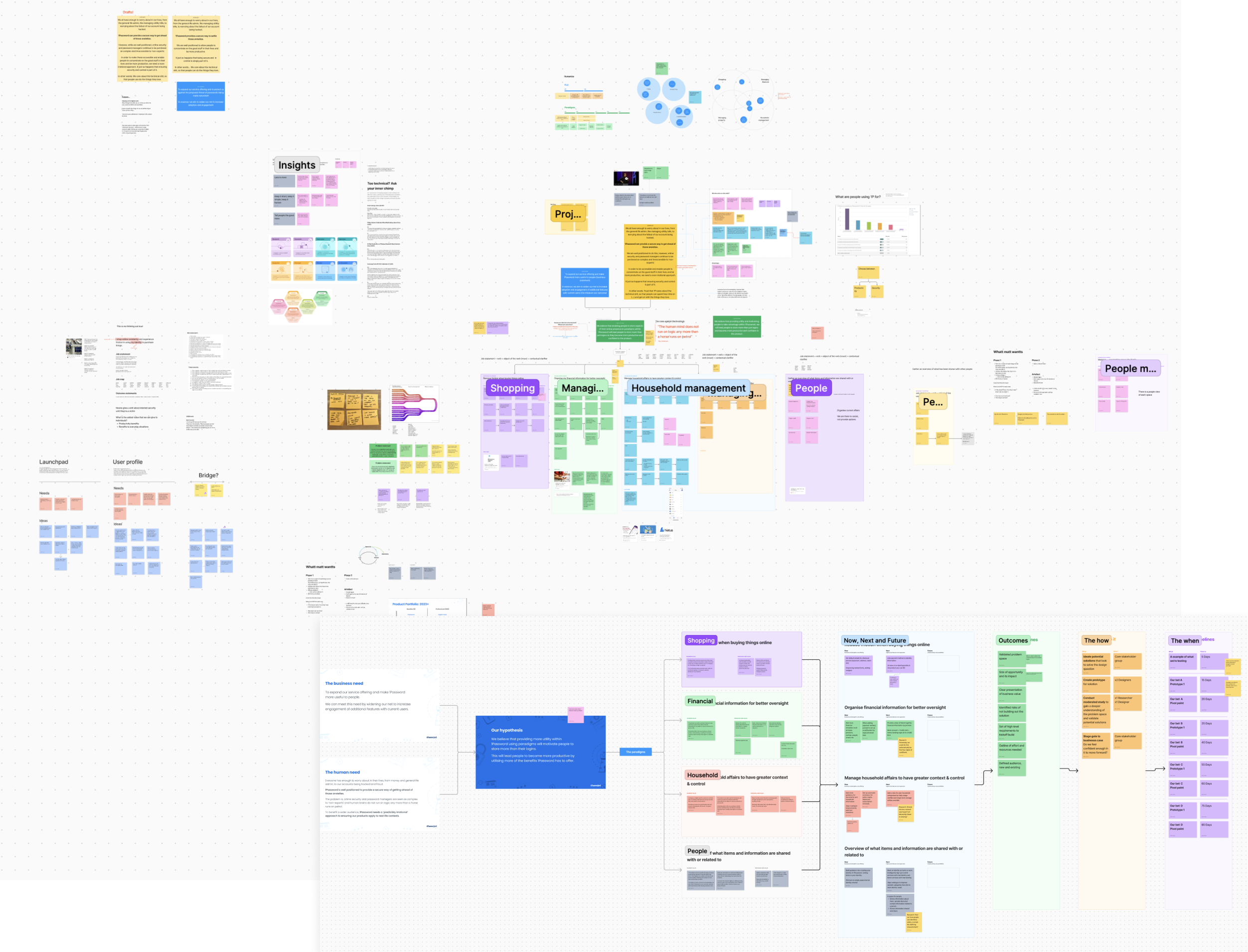
With that in mind, I used a hypothesis-led approach to align the team:
🌱 Hypothesis v1:
"We believe that providing more utility within 1Password using clear paradigms will motivate people to store more than just their logins. This will increase product stickiness and perceived value."
This gave us a structured way to tie user needs, business goals, and product telemetry together, which made it easier to gain leadership buy-in.
For the more engaged people using the product, they had opportunity to have direct say in our roadmap and help us shape the future of the experience.
We ran a series of moderated and unmoderated studies targeting new users within the first few weeks of onboarding. We explored questions like:

To bring in behavioural thinking, I introduced BJ Fogg's Behaviour Model to demonstrate why adding documents or IDs often failed:
This helped us anchor the need for contextual nudges and structured guidance — not just feature exposure.
From there, we evolved the concept of "Paradigms" into what became Spaces, structured areas of the app built around real-life contexts.
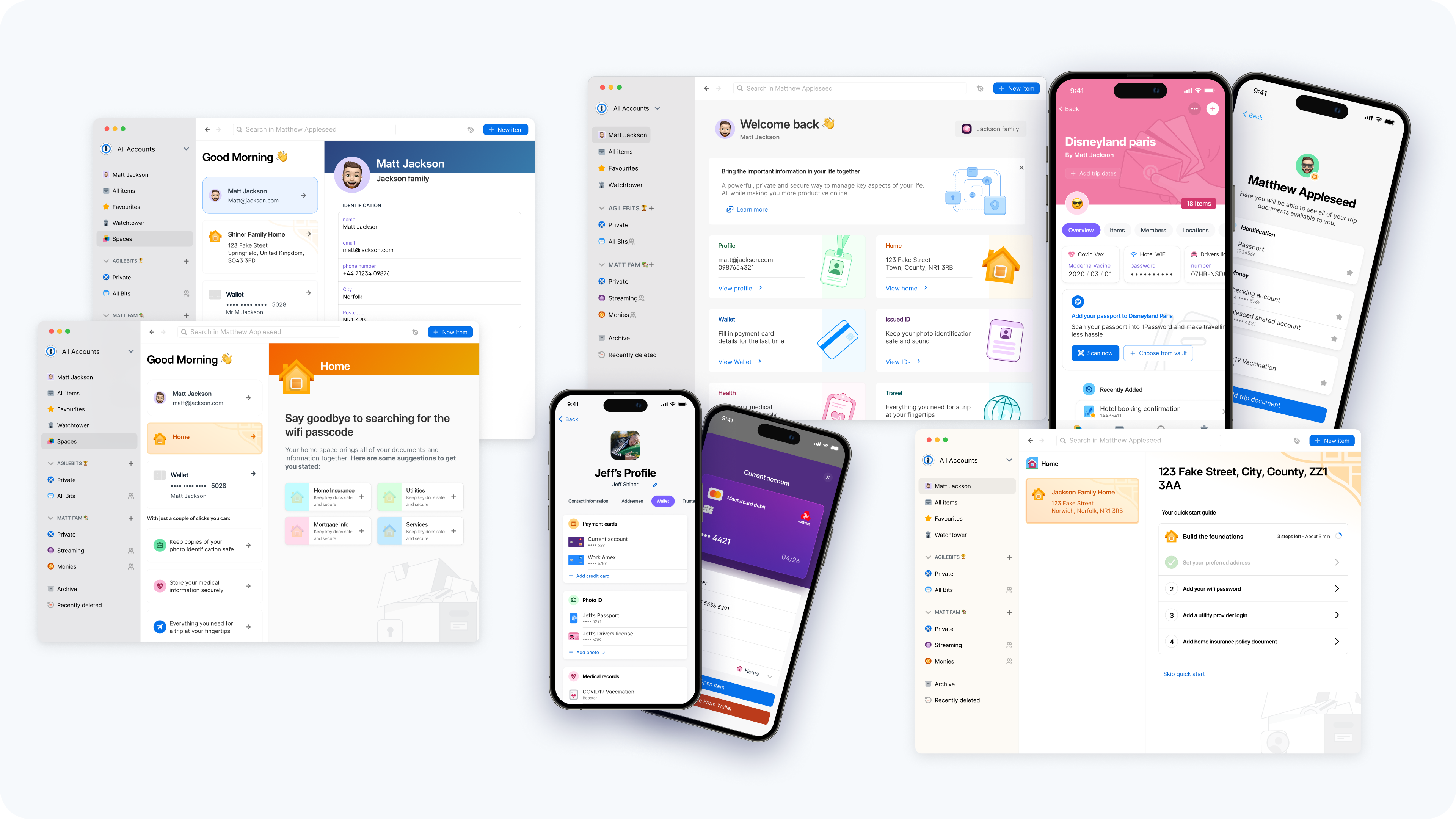
These would act as both organisational tools and cognitive scaffolding, helping users quickly understand what else 1Password could do without needing a long onboarding flow.
We created a refined hypothesis to guide this work:
""We believe that clearly defined "spaces" will help users discover and engage with 1Password's full value earlier. We'll know it's working when more users add 2+ item types and convert post-trial.""
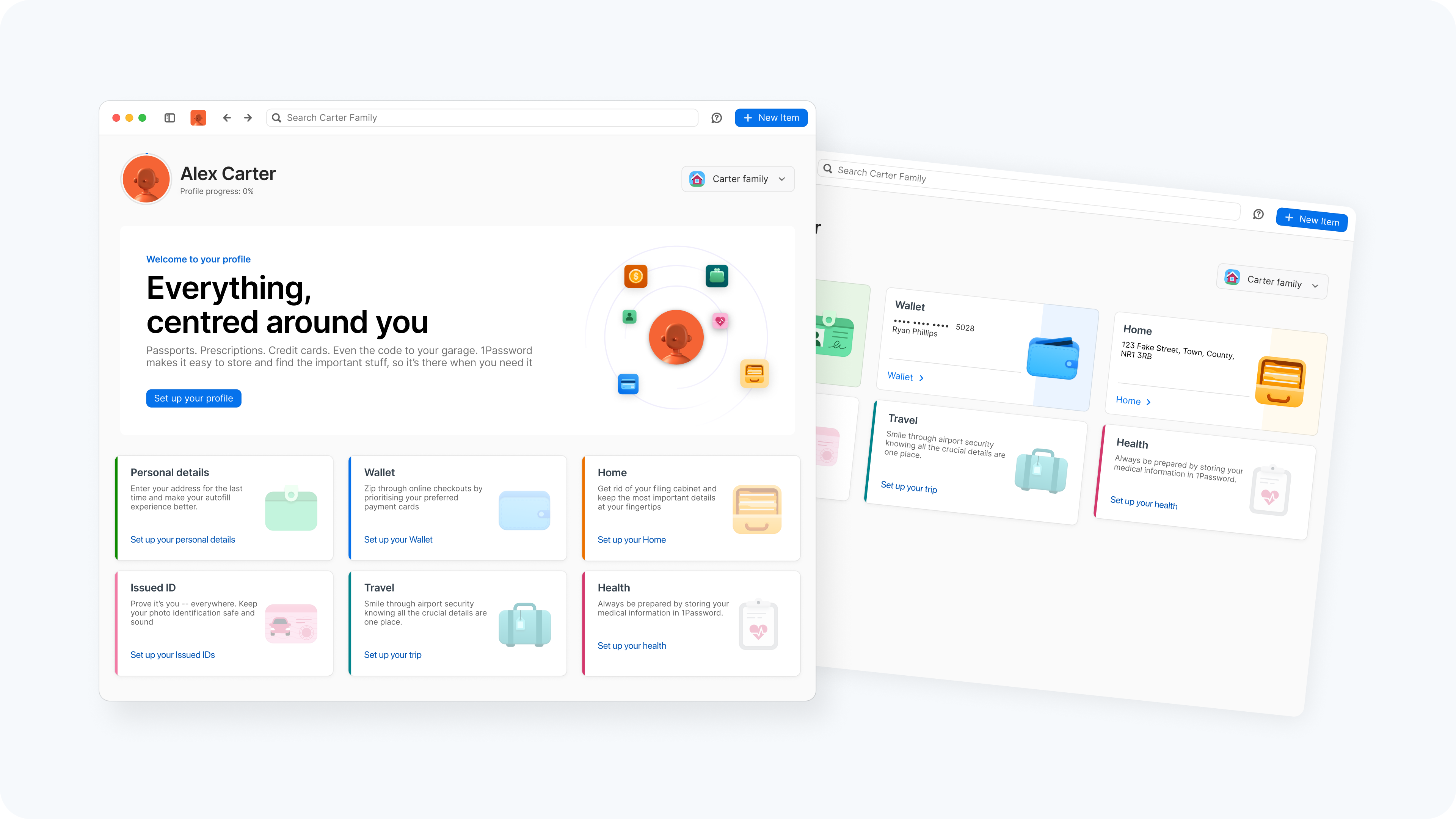
The design was ambitious, and a significant departure from the existing app model. We needed a safe, controlled way to test this vision with real users, without disrupting the core experience.
So myself and my Design Director proposed we create a Labs environment. Where teams could launch experiments and users could opt in. After some internal lobbying, we got buy-in. I partnered with our illustrator Joanna to make it feel inviting and exciting.
We launched it publicly and began testing.
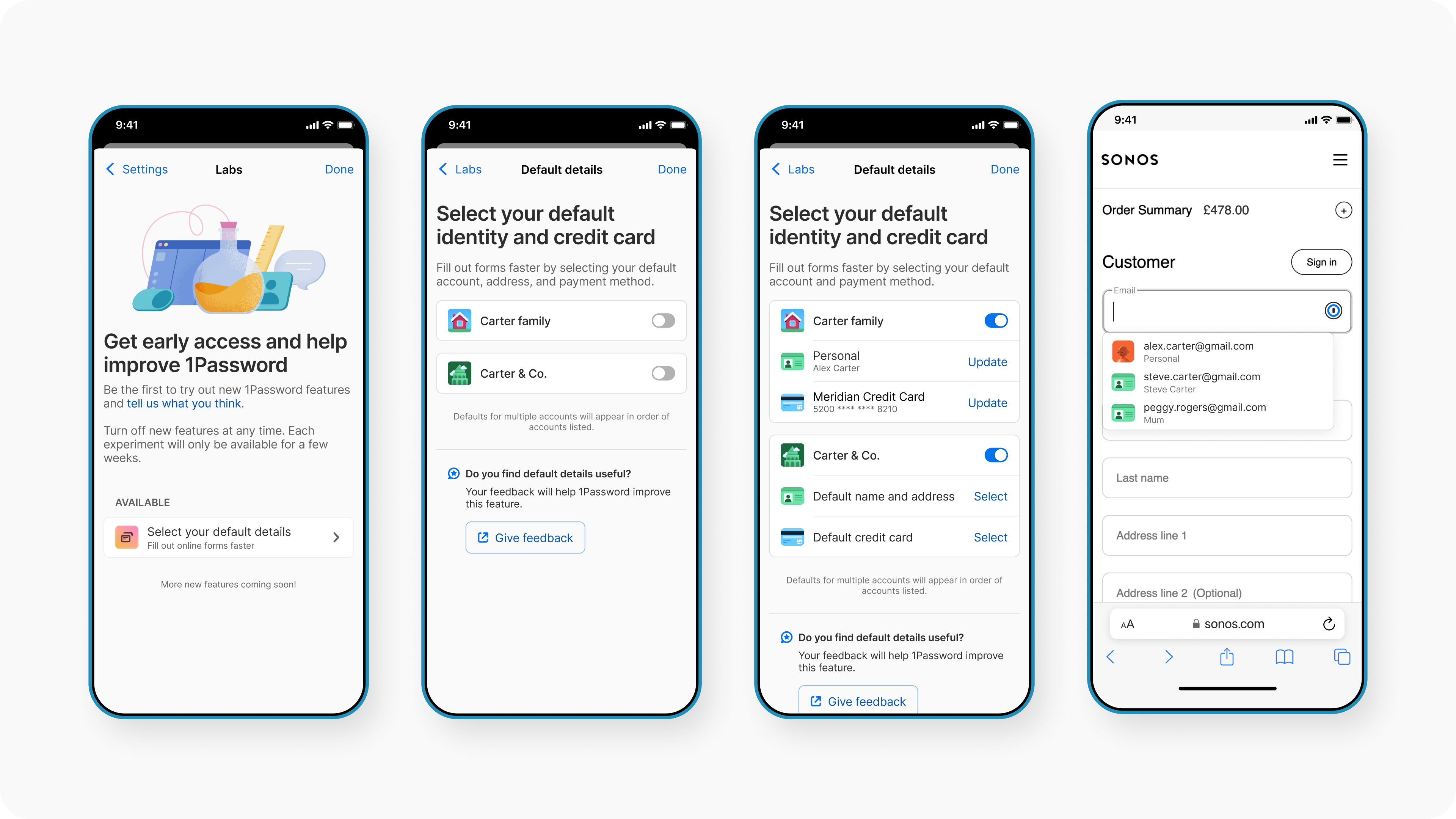
Our first test: Default Details, a precursor to the "Profile" space. It let users set default identities and cards for autofill, making value visible right away.
We also snuck in OCR scanning for credit cards, a highly requested feature that reduced friction and boosted perceived utility.
These early experiments gave us:
What started as a Figjam doodle became a new direction for 1Password.
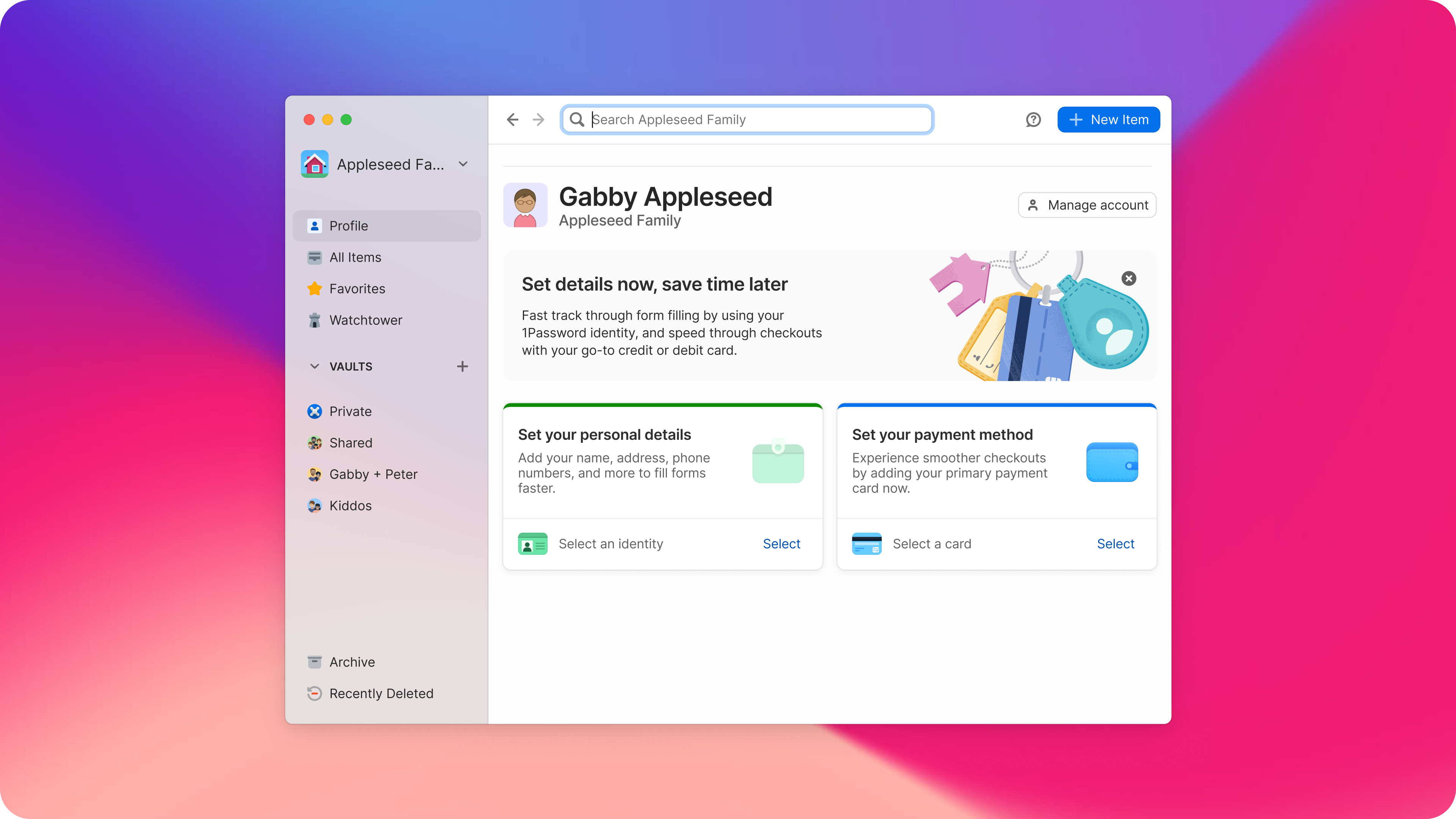
The "Spaces" concept led directly into Profile, which is now live. It set the groundwork for future, more personalised user experiences across the app.